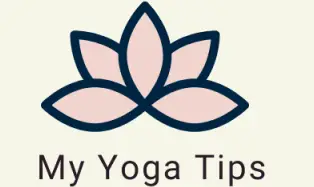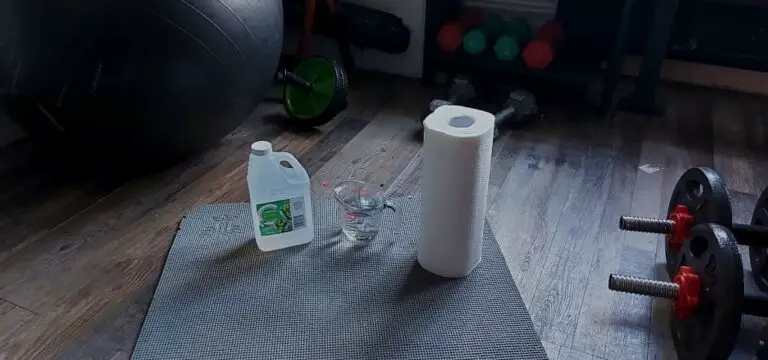How Thick Should Yoga Mats Be For Knees

Yoga practice comes in many different forms with benefits for various issues. One of these includes painful joints and knees, so you shouldn’t give up on your health and fitness goals because of bad knees. The answer lies in finding out how thick a yoga mat should be for the knees.
Yoga mats vary in thickness depending on a person’s needs and preferences. For sensitive knees, the ideal thickness of a mat is 6 to 8mm thick. This still provides a stable platform for balance and cushions the knee joints against hard surfaces to help them from compressing.
Whether you have bad knees or suffer from knee pain because of specific poses, you can remedy this by choosing the right yoga mat or accessories that can help alleviate the pain by supporting and cushioning the jarring on the joints. In this article, we look at to consider for pain-free knees when choosing a yoga mat.
How Thick Should A Yoga Mat Be For Knees
Yoga is a low-impact-exercise alternative for people of all ages looking to get fit, lose weight, stay flexible, or for their mental health. But a yoga mat is one of the most essential tools for a yoga enthusiast.

Yoga mats come in many different forms, shapes, and sizes and finding the proper thickness depends on your needs and preferences.
Regular yoga mats range from 3 to 6 millimeters, but if you have sensitive knees opting for a thicker mat to prevent or protect your knees from injury is a smart idea.
Yoga mat thickness depends on your needs and the type of yoga you practice. Some mats can be as thick as 19mm to cushion your knees.
An important tip to note is that a too-thick mat can also exaggerate knee pain. Thicker mats can affect your balance, putting more strain on your knees to compensate for the loss of balance. The ideal thickness for sensitive knees is generally between 6 to 8 millimeters.
Learn More!!! 4mm Vs. 6mm Yoga Mats: How To Make The Choice
What Is The Importance Of A Yoga Mat For Knees
Knee pain is more common than you would think for many reasons: old injuries, health conditions, post-surgery, or age. Certain yoga poses can cause or increase jarring, pressure, or knee pain due to bending, stretching, and over-extending in stretches.
It’s very important to remember that the knee is a hinge joint with the primary function of moving forwards and backward during flexion and extension. During flexion, the knees can rotate internally by ten degrees and externally by thirty-five degrees which can cause knee pain.
The yoga mat not only provides a non-slip surface which is helpful for balance but also provides a degree of protection against slipping and injuring your knee. It provides cushioning to prevent knee joint jarring or compression and helps absorb shock during specific exercises.
What To Consider In A Yoga Mat For Bad Knees
When shopping for a yoga mat, you may face a wall of choices that can overwhelm your decision. So, to help make the decision easier, here are a few criteria to remember when choosing a yoga mat for sensitive knees.
Material
The material of your yoga mat is important. Mats that are too soft can affect poses such as standing balance and inverse postures. Choose a mat for durability and performance abilities, such as natural rubber or PVC mats.
Thickness And Cushioning
Thickness is significant in considering the cushioning of a yoga mat if you have sensitive knees. Choose mats that are 6mm or thicker to help alleviate pressure on the knees. But in your quest to reduce discomfort be careful to find a balance between stability and cushioning.
Too thick Mats can compromise your pose’s stability, adding to the strain on the knee joint and, ultimately, defeats the objective.
Texture
Textured mats provide more grip and traction to decrease the risk of slipping. However, very bumpy mats can affect the comfort of knee joints. It’s better to choose a smooth, soft yoga mat with a sticky surface to provide grip so you can easily stretch without compromising your pose and adding strain to the knee joint.
Length And Width
Yoga mats come in various lengths and widths to accommodate people’s sizes and heights. Choose a mat that will give you enough space to comfortably practice poses within the parameters of the mat and is wide enough to support the knees.
Yoga Props For Sensitive Knees You Can Use With Your Mat
Apart from yoga mats, there are some yoga props you can use on top of your mat for sensitive knees.
Thick yoga mats may be highly comfortable and supportive when your knees are pushed into the mat. However, this thickness can affect the stability of your standing poses, inadvertently putting strain on your knee joints.
Using a yoga mat, for instance, a 6mm, which is comfortable and supportive yet still sturdy enough to offer stability in standing poses but may not be sufficiently thick for knees. You can benefit from props that add padding and thickness to the mat to protect your knees.
Knee Pads
Knee pads are small high-density foam pads that you can place over your mat under your knees to add extra cushioning when needed. take a look to this knee pad cushion on amazon
Yoga Jellies
Yoga jellies are small pads, about 14 centimeters, that you can place under each knee to provide extra cushioning on top of your mat. Jellies help you bear more weight without jarring your knee into the ground.
Yoga Blocks
Yoga blocks can provide support for sensitive knees and joints. Made from lightweight foam, they help keep your knees firmly planted during poses, restrict movement, prevent overextending your joints, and prevent knee injuries. You can find in Amazon this high density yoga knee pad
Blankets
A quick fix is using a folded blanket or towel under your knees directly on your mat. This adds cushioning and comfort when you need to have your knee in contact with the ground. Using a blanket under the shins lifts your knees off the ground in poses like the cat pose, alleviating the pressure on the knee joint itself.
Read my article on Tips To Choose The Best Yoga Mat And Maintain
Tips To Prevent Knee Pain During Yoga
If you experience knee pain during yoga, it’s essential to talk to your yoga instructor to help you ensure you are doing the exercise correctly.
Here are some tricks to help prevent and alleviate some knee pain during your yoga session.
- Increase the flexibility of your hip joints to alleviate strain on the knees.
- Always be aware of your foot positions; the strain on ankle joints due to incorrect footing will carry into the knee joint.
- Elevate your pelvis to prevent over-flexing of your knees
- Keep your kneecaps off the ground
- Do not hyper-extend your knee joint
- Prevent knee rotations
- Avoid squatting too low
Conclusion
Yoga can be adjusted to accommodate any fitness and skill level of a person, and joint and knee problems should not deter you from achieving your fitness goals. Choosing the right yoga mat should align with your needs and preferences to provide thickness, comfort, and cushioning to offer a comfortable, pain-free yoga practice.






